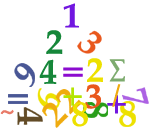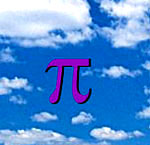From the standpoint of most environmentalists, very little went right on election day. Ralph Nader fell short of getting 5 percent of the vote, so the Green Party won’t qualify for federal matching funds in 2004. And it seems likely that Al Gore, despite receiving more of the popular vote than his Republican rival, won’t be taking the oath of office this January.

Much of the blame for this state of affairs has fallen on the Electoral College, which is poised to elect a candidate opposed by more than half of the voting public. But if blame should be cast — and it should be — one need look no farther than … mathematics.
Huh?
Yes, you heard me. The real problem with the American electoral system — in which each voter casts a ballot for a single candidate, winner-takes-all — is that it’s mathematically unsound. In fact, if mathematicians who specialize in voting systems (and there are a surprising number who do) were to choose a method of picking a president, the American way would be just about the last one they’d pick.
One Person, One Vote, One Big Mistake
Simply stated, the problem with American-style plurality voting (in which the person with the most first-place votes wins the election) is that a candidate who is opposed by the majority of voters can still win, while a candidate who is favored, at least grudgingly, by the majority of voters can lose. When you factor in Nader voters who preferred Gore to Bush, that’s exactly what happened in this year’s election.
Plurality voting thereby violates a core intuition about what a fair, democratic voting system must do — namely, ensure that the winner of the election could beat (or at least tie) every losing candidate in a head-to-head race.
Sure, the system works well enough when there are only two candidates for president: Whichever candidate gets the most votes is clearly the people’s choice. But as soon as you add a third candidate into the mix, you have a recipe for a democratic — and numerical — disaster. The more support a third party gains, the more likely it is that a candidate opposed by the majority of voters will be elected. As a result, plurality voting makes third parties, when they’re not irrelevant, downright dangerous.
This is one reason why the major parties — which seem less and less like coherent parties and more and more like loosely affiliated coalitions — work so hard to marginalize or co-opt any third party that gains a toehold with the electorate. America stands virtually alone among the world’s established democracies in its lack of institutional and public support for minor parties — and our democracy suffers for it, in a narrowing of the political debate and a vanishing of differences between major party candidates.
As Easy as 1-2-3
Surprisingly, there’s an easy solution to America’s plurality voting disaster. Mathematics got us into this mess, and it can get us out.

Out, but perhaps not all the way out. The truth (and there’s a theorem to prove it) is that there is no mathematically perfect voting system: No matter what rules you use for your election, there can always be cases in which someone who has a plausible claim to being the people’s choice will be left twiddling their thumbs on swearing-in day.
But the fact that there’s no perfect system doesn’t mean that some systems aren’t better than others. My favorite candidate to replace the plurality system is called Instant Runoff Voting, or IRV. IRV requires voters to rank candidates in order of preference (e.g., first Nader, then Gore, then Bush). The candidate who receives the fewest first-place votes is eliminated from the running, and all of their supporters’ votes are transferred to whoever was next in line on the ballots. This process is repeated, the field gradually narrowing as votes are reassigned, until a single candidate gets a majority of the votes.

Pi in the Sky?
IRV is not just a mathematician’s pipe dream; it has a proven track record. Australia and Ireland both use IRV for national elections; the Cambridge, Mass., city council is chosen by a variant of IRV; and efforts are underway to implement IRV in Alaska, Vermont, and New Mexico. Best of all, IRV for president could be adopted immediately — the Constitution is silent on how states run their elections, so any state with the political will could change to this voting system.
If IRV had been in place this past election day, we would be facing a very different political landscape. The Greens would have gotten their 5 percent, and possibly more, as IRV would have freed all of us eco-minded citizens to vote our consciences without jeopardizing our interests. Gore would be heading to the White House, perhaps chastened by the knowledge that he was the second choice of a significant percentage of the polity. And (most important) I wouldn’t have to spend my next four years fighting the malevolent environmental proposals that, without a doubt, will start emanating from the White House come January if Bush takes the helm.

